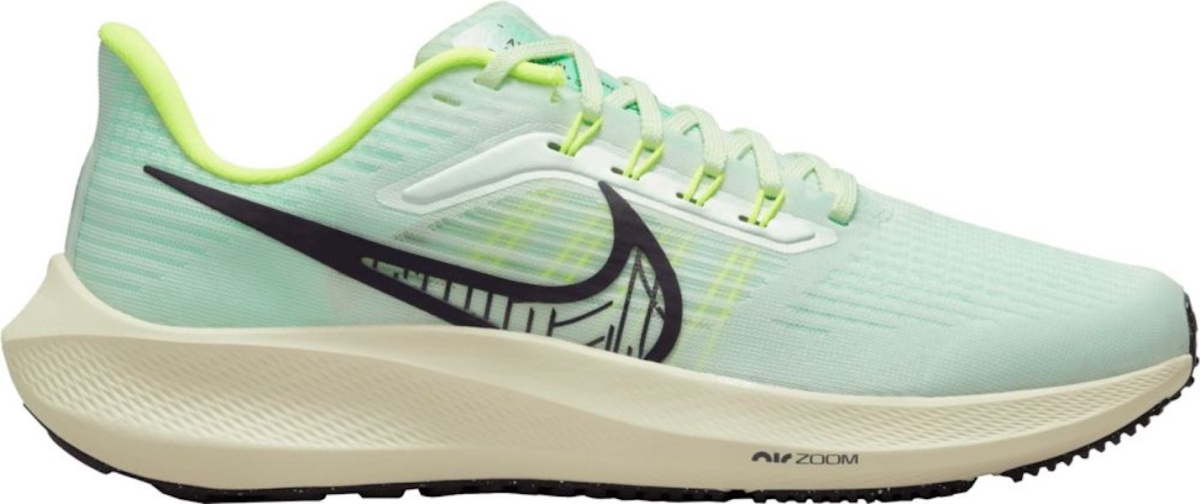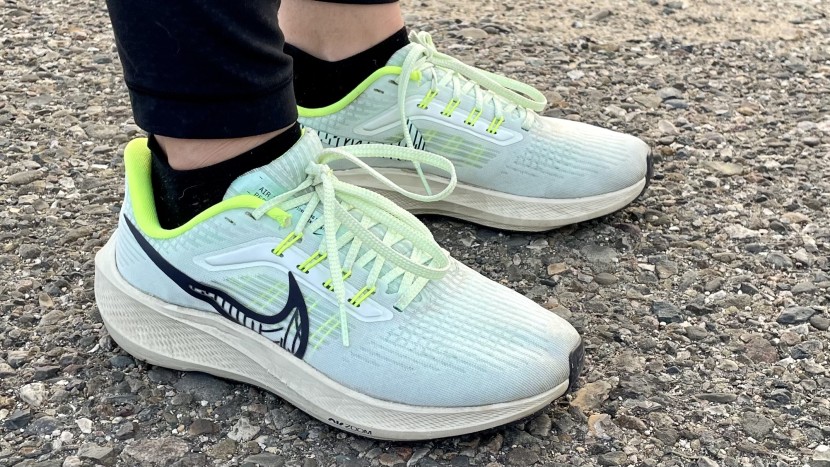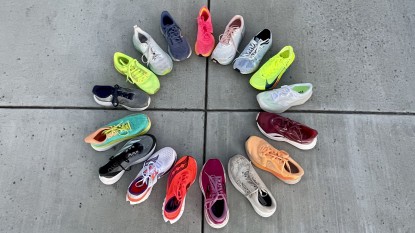Nike Air Zoom Pegasus 39 - Women's Review
Our Verdict
Our Analysis and Test Results
Nike updated the ever-popular Pegasus this time around and we are loving the updates. This is a shoe we have tested again and again and this is the first version in years that inspires us to choose them over some of the other kicks in our lineup. With a lighter overall weight and the addition of some cushion and an Air Zoom unit, Nike upped the ante to release a shoe that is anything but basic.
Responsiveness
Nike added a second Air Zoom unit, which is essentially a small air bag, to the Pegasus 39. This increased this shoe's responsiveness by a lot. When running in prior models, we felt that the Pegasus was on its way to being responsive, but ultimately felt sloppy underfoot. The extra air bag adds some serious pep. We love how this shoe seamlessly encourages a heel-to-toe roll and gives great energy return.
Some of the more responsive shoes that we've tested tend to run narrow, especially in the toe box. The Pegasus 39 offers a bit more toebox space than other responsive shoes, making it a shoe that can accommodate a wider range of anatomies. If you are after a responsive shoe with balanced comfort, the Pegasus is a great shoe to check out.
Landing Comfort/Cushioning
Though Nike added an extra Air Zoom pocket, this doesn't necessarily aid in the underfoot cushioning of the shoe. We get it, it totally sounds like it should. The Pegasus 39 provides above-average landing comfort, but is by no means a cushy maximalist road running shoe. Above all else, the Pegasus offers super-balanced comfort and cushioning. It isn't our go-to for LSD treks, but it certainly makes a reliable marathon runner. The landing is comfortable without being over-cushioned. The foam base is thick, which is the main feature that helps dampen the impact of repetitive footfalls.
Stability
Though Nike has made strides when it comes to adding stability features, the Pegasus 39 won't be for you if a very stable shoe is what you're after. This iteration of the Pegasus does include some structure to prevent your foot from sliding around on the insole, which we appreciate while running. The underfoot stability of this expression of the shoe is better than in previous versions and does add some helpful stability.
As physiology and biomechanics nerds, however, it's hard to ignore the lack of lateral structure in these shoes. This isn't necessarily a bad thing, as many runners do not feel the need to have lateral structure in their running shoes. Runners who over-pronate and want more structure might find the Pegasus lacking in this area. The lack of lateral structure is the main reason why we wouldn't choose this shoe for our long-distance endeavors. We typically find that shoes with stronger architecture serve us better for marathon training and longer race days. When it comes to lateral stability specifically, we understand that it can be assessed on a case-by-case basis.
Upper Comfort
Nike removed a few of the mesh overlays with this version of the Pegasus and we love how the upper feels in so many ways. It certainly feels thinner and more flexible than in previous models. The toe box provides enough space for toes to splay, but without a clown-like profile. The Pegasus manages to marry toebox real estate with a svelte overall profile and it translates well during speedy runs.
Despite the removal of the overlays, the Pegasus 39 runs hot. We did most of our testing on the Central Coast of California and even amid foggy, chilly mornings, we found that our feet heated up. The foot-sauna effect was most prominent on warmer days on the track and paved bike paths. Despite their less-than-average breathability, the overall upper comfort of the updated Pegasus is above-average.
Weight
The new version of the Pegasus is lighter than prior models, which is an update that we love to see in a shoe built for speed. The removal of the mesh overlays is the main way that Nike was able to shed weight with the release of this shoe. In motion, the Pegasus 39 feels light and fresh. With each women's size 7 shoe weighing in at 7.58 ounces, these shoes actually weigh less than many of the shoes in our test lineup. When we specifically compare the weight of the Pegasus to other shoes that are made with speed in mind, it comes up a bit short. We never felt weighed down while hitting quicker paces on the track in the Pegasus, but when we switch to lighter shoes, the weight discrepancy is notable.
Should You Buy the Nike Pegasus 39?
While not exactly a bargain buy, the updated Pegasus provides a solid deal. Not only is the price point of this speedy shoe a bit easier to swallow than some of the techier competitors, but Nike has made strides with the durability of this beloved shoe as well. We do our best to beat our running shoes to threads, but in a controlled testing environment, we can only take this so far. Year after year, we have been surprised by how durable both the inner and outer elements of the Pegasus remain. Because of its more accessible price point and ability to stay strong after taking a beating, we think the Nike Pegasus 39 is a great value.
What Other Road Running Shoes Should You Consider?
The Pegasus has seen some solid improvements in recent years. While not a top pick for all runners, we love where the updates have landed this shoe. If you are looking for a shoe with unparalleled responsiveness and energy return, we recommend giving the Saucony Endorphin Speed 3 or Saucony Kinvara 14 for a joyride. Comparatively, Saucony-made shoes tend to run a bit more narrow, which isn't a feature that suits all anatomies. If your feet run a bit wider, the more spacious toebox of the Pegasus 39 might be a better fit for for you.












